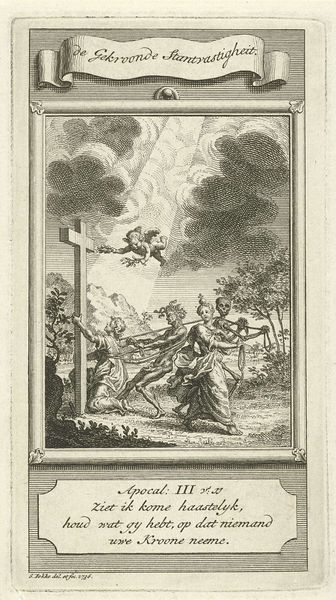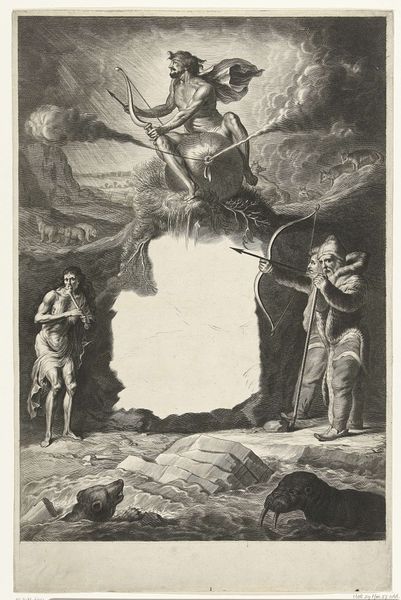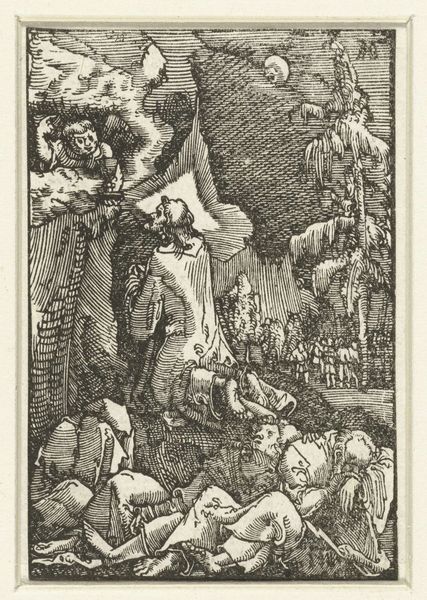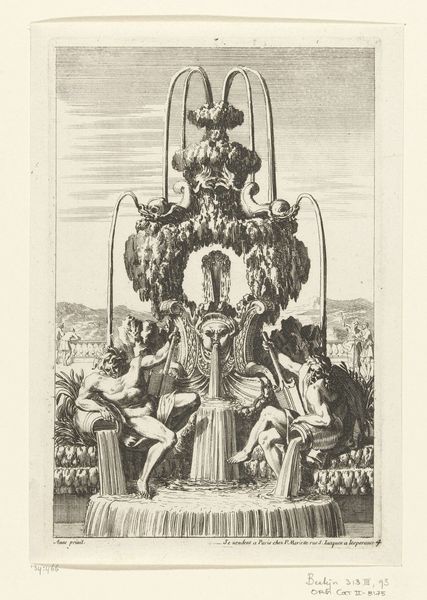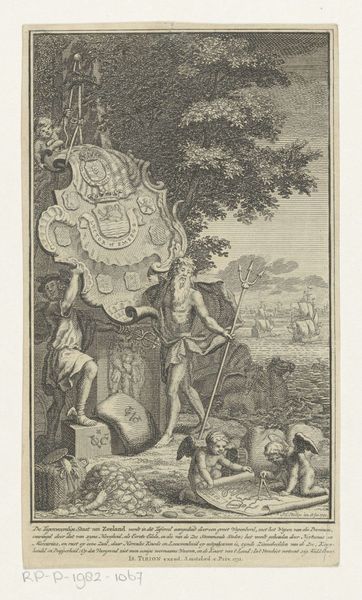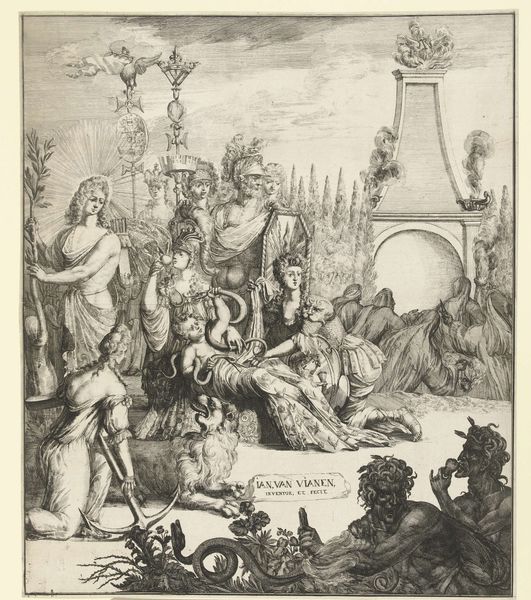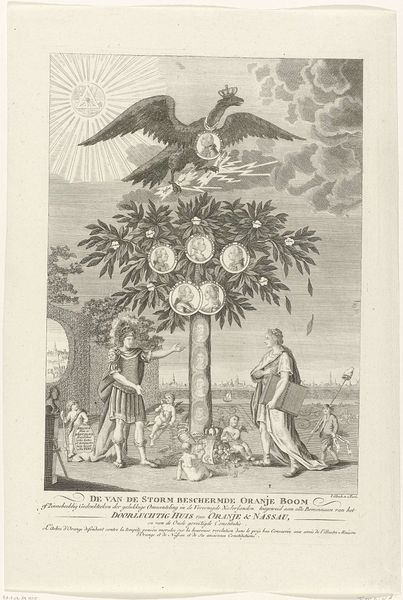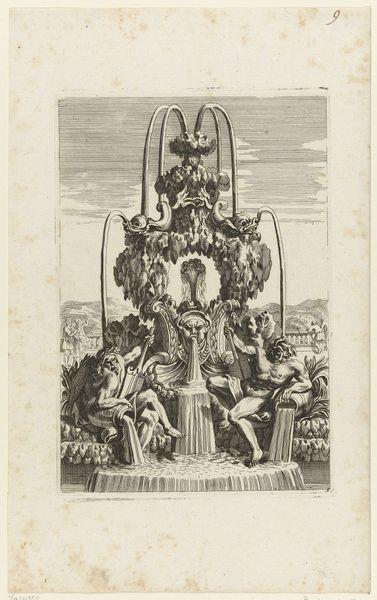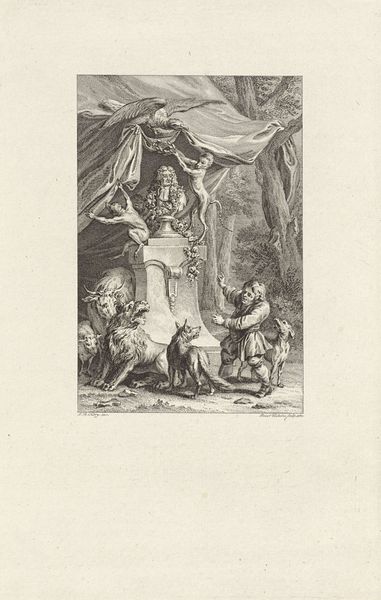
drawing, print, pen, engraving
#
drawing
#
allegory
#
baroque
#
pen drawing
# print
#
pen
#
engraving
Dimensions: height 141 mm, width 84 mm
Copyright: Rijks Museum: Open Domain
Curator: Gerrit Lambrechtsz created this intriguing engraving, "Vrouw in aanbidding voor een brandend hart," around 1715. Editor: It’s undeniably striking, with that woman gesturing upwards before a rather ornate heart-shaped burner. It has a somber mood. What does it all signify? Curator: Allegorical prints such as this one use complex visual language. Here, the burning heart signifies fervent religious devotion, while the woman likely represents the soul, ascending through prayer. Look closely at the cherubs in the sky. Their presence underscores the divine connection. Editor: Right, the divine… and those angels look rather uniform, almost mass-produced. That strikes me because engravings allowed for easy reproduction and dissemination of these very specific religious ideas, didn't they? How many copies could Lambrechtsz have made? And how widely were these prints distributed? The materiality of this engraving facilitated the spread of ideology. Curator: Precisely. This imagery builds on well-established symbolic traditions, resonating deeply with Baroque sensibilities—a desire for emotional intensity in religious experience. The act of replicating this scene visually is an act of cultural transmission itself. Editor: And the skill involved! Notice the delicate line work, creating subtle variations in texture and light. Lambrechtsz certainly mastered his tools. Was he printing these himself, or part of a workshop? The division of labor interests me here, how specialist skills led to complex image production. Curator: Knowing the cultural memory encoded in symbols lets us see beyond the surface. The burning heart motif links to long traditions, expressing themes of love, sacrifice, and spiritual awakening. It suggests an introspective quest. Editor: Ultimately, it highlights how technical processes and the spiritual intersect in 18th-century Dutch culture. I never imagined looking at something so seemingly pious and reflecting on modes of artistic production and circulation so directly. Curator: The print certainly holds many layers. It speaks to how enduring images mold cultural identities and give form to inner states. Editor: A fruitful intersection, for sure: devotion molded by design, both intertwined by commerce.
Comments
No comments
Be the first to comment and join the conversation on the ultimate creative platform.
